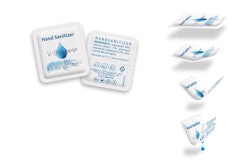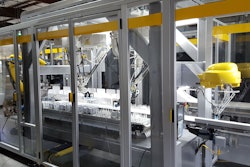Onsite audits have always been the cornerstone of a good relationship between healthcare brand owners and their contract service partners. But with employee, animal, and product safety being of the utmost importance in the pandemic, companies have been switching to remote or hybrid audits.
At a recent joint webinar hosted by PDA Southern California and OCRA (Orange County Regulatory Affairs), representatives from The Jackson Laboratory (JAX) and an auditor from IVR Clinical Concepts, Inc. (IVRCC), shared how they handled a remote audit from a client across the country, allowing for some local “boots on the ground” at the JAX location in Sacramento.
A hybrid audit is where a portion of the audit takes place remotely, with a local auditor visiting the facility to reduce travel and exposure. In this hybrid case, the client on the east coast was able to perform a document audit, and Angela Bazigos, CEO of Touchstone Technologies Inc., in association with IVRCC, conducted the onsite audit in California.
At first, the client had asked about an in-person audit. Dr. Aaron Rose, Senior Program Manager for JAX In Vivo Services, said that after holding discussions internally, they made the decision that bringing someone in from the East Coast—where COVID-19 was exploding at the time—and risking the health of staff didn't make sense. Karine Lux, Senior Manager, Quality Systems Initiatives at JAX, explored the options and worked to bring in Bazigos.
The trio discussed operations and shared some lessons learned and tips for the future. They also expressed opinions that fully remote or hybrid audits may be here to stay for a number of reasons.
1. Use of existing filesharing
JAX was already using Box as a tool for cloud file management, and they used it to share documents with remote auditors due to security and versatility. “Early on, we were looking at a few different examples of file sharing—some that were actually specifically designed for sharing documentation between organizations when you're having either an audit or a negotiation,” said Rose. “We landed on Box because our IT group had already vetted it from a security perspective. And, because we needed to move quickly, we wanted to work with a solution that we had that rather than starting that process from scratch.”
Looking for More Guidance on Remote Audits? Attend PDA’s Workshop Apr. 8, 2021.
Lux added that they have a signed HIPAA Business Associate Agreement (BAA) with Box which was important, and that “files are encrypted in transit as well as at rest. You can easily turn on file sharing and then remove permissions for editing or viewing.”
2. On-site local auditor accommodations
For her visits, Bazigos would arrive and fill in a health questionnaire before entry to the facility. Of course, there were also temperature checks, masks, social distancing, and copious amounts of hand sanitizer.
Anyone entering the lab had to change out of their street clothes and gown up, leaving all personal effects in a locker to reduce the potential for spreading particles.
To some degree there were enhancements from COVID-19, said Rose, including wearing face masks in the corridors inside the lab. But gowning and degowning is already routine procedure for entry, for the protection of both people and mice in the facility.
Of course, social distancing can be tough in certain areas. The necropsy lab was crowded, so everyone relied on gowning and masks for protection. In order to view procedures, Bazigos said she was given a stool to stand on due to her shorter stature. Ensure there are adequate tools and adaptations in place for auditors on-site to observe as safely as possible.
3. Cameras
JAX made use of their existing ceiling-mounted cameras, installed for personnel safety. “These became very useful as we brought on remote audits. Auditors can see and zoom into the study animals,” said Lux. A step further, auditors remotely observed cell culture procedures in-depth via JAX laptop cameras.
When asked about camera control by an attendee, Lux explained, “We [at JAX] have control of the cameras. We can log on remotely through our VPN to activate the cameras, but they are used from a safety and security perspective, so we don't give control of the cameras to an auditor or clients.”
Bazigos advised auditors: “Being in the labs was like being in a Faraday cage. There was no connectivity, I would have had no bars on my cell phone—and I did not have my cell phone with me since I had to leave it at the locker. With the setup, you wouldn't be able to use your own camera, you had to use the lab cameras.”
One audience member in the chat noted that his company has been able to use iPhones compatible with their teleconferencing software, after being vetted by their IT department. Bazigos said she would be interested, though it may have to be a lab iPhone as they weren’t able to bring their own phones into the labs.
4. Budgeting prep time
“Give yourself plenty of time to get everything set up for the remote audit,” said Lux. “It takes time to upload all the documents in Box. Start thinking about the questions that you'll be asked. If you don't have cameras, take pictures (if you can) of the areas that somebody would normally be able to step into but can't right now.”
Related reading: How To Broaden Use of Remote Access
Remote auditors and brand owners/clients may benefit from a facility plan. “I think having a visual picture of the contract facility and the flow before you start looking at the SOPs and so on might be helpful… as well as a very preliminary meeting to discuss how the facility is laid out,” added Lux. Whether you are the client or the contact service organization, plan for extra meeting time. Lux said she was glad they had set up another meeting two days after concluding, in case there were questions or additional requests for information that came up at the end.
5. Critical takeaway
Lux offered another can’t-miss recommendation: do not forget to schedule in breaks. “As we know, audits go for the full day and you cannot sit there all day trying to sit up straight in your chair because you're on video,” and not get up and get a drink.
Build in space for bio-breaks and also consider lunch times in various time zones—lunch hour in Sacramento is 3:00pm in Florida. Breaks also give people a chance to retrieve any documents that may be needed.
Future use
Lux says that remote or hybrid audits will continue and are becoming the norm. “We've been able to successfully share documents ahead of time. The auditors come in with their questions rather than having to review documents during the audit. Then we can give them the virtual tour via camera, and offer a side-by-side view during procedures through the laptop cameras.”
Rose also noted that remote auditing might be incorporated into general practices post-COVID-19. The practice opens up who can attend and cuts down on travel time and costs. “We were forced into a hybrid in this situation, but I buy what Angela is putting forward here with regards to the idea that you could have an auditing hybrid in general: an audit group that's already part of or hired by a client to look at what a [contract organization] is doing and then a person local to where the CRO operation is happening to go into the facility so that folks don't have to fly quite as much, save on expense, and save on jet lag. I think it's pretty viable. If anything was going to [cause this shift] quickly, I think COVID-19 was the mechanism.”






















